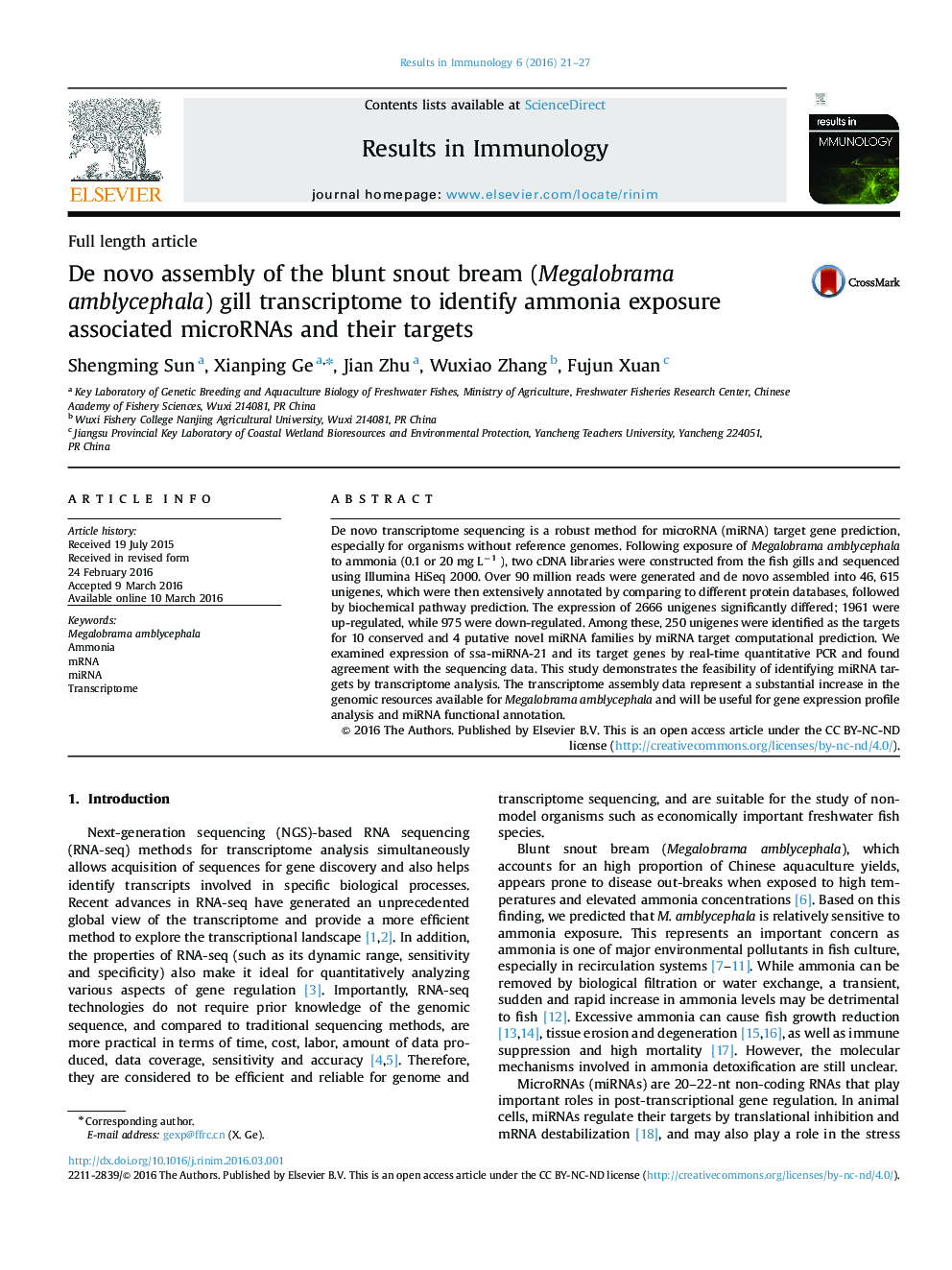| Article ID | Journal | Published Year | Pages | File Type |
|---|---|---|---|---|
| 2202358 | Results in Immunology | 2016 | 7 Pages |
•Several differentially expressed genes and miRNA were identified.•Target prediction indicated that a number of miRNAs involved in immunity.•The study provides an understanding of molecular mechanisms of ammonia-induced toxicology in fish.
De novo transcriptome sequencing is a robust method for microRNA (miRNA) target gene prediction, especially for organisms without reference genomes. Following exposure of Megalobrama amblycephala to ammonia (0.1 or 20 mg L−1 ), two cDNA libraries were constructed from the fish gills and sequenced using Illumina HiSeq 2000. Over 90 million reads were generated and de novo assembled into 46, 615 unigenes, which were then extensively annotated by comparing to different protein databases, followed by biochemical pathway prediction. The expression of 2666 unigenes significantly differed; 1961 were up-regulated, while 975 were down-regulated. Among these, 250 unigenes were identified as the targets for 10 conserved and 4 putative novel miRNA families by miRNA target computational prediction. We examined expression of ssa-miRNA-21 and its target genes by real-time quantitative PCR and found agreement with the sequencing data. This study demonstrates the feasibility of identifying miRNA targets by transcriptome analysis. The transcriptome assembly data represent a substantial increase in the genomic resources available for Megalobrama amblycephala and will be useful for gene expression profile analysis and miRNA functional annotation.
